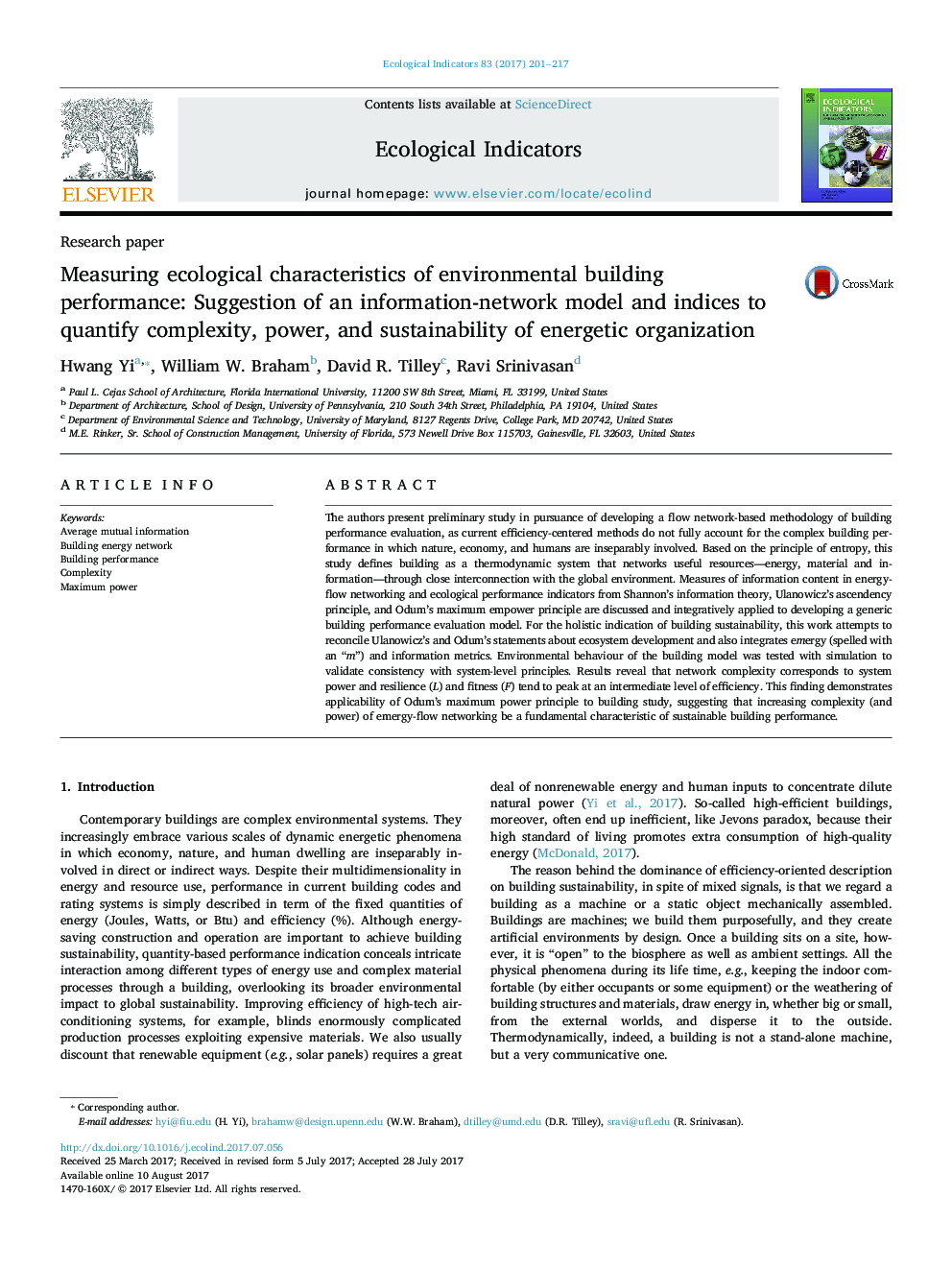| Article ID | Journal | Published Year | Pages | File Type |
|---|---|---|---|---|
| 5741491 | Ecological Indicators | 2017 | 17 Pages |
â¢A network-based evaluation model of environmental building performance is suggested.â¢System-level ecological/thermodynamic principles are discussed and reconciled.â¢Information of energy networking is suggested as holistic building performance indices.
The authors present preliminary study in pursuance of developing a flow network-based methodology of building performance evaluation, as current efficiency-centered methods do not fully account for the complex building performance in which nature, economy, and humans are inseparably involved. Based on the principle of entropy, this study defines building as a thermodynamic system that networks useful resourcesâenergy, material and informationâthrough close interconnection with the global environment. Measures of information content in energy-flow networking and ecological performance indicators from Shannon's information theory, Ulanowicz's ascendency principle, and Odum's maximum empower principle are discussed and integratively applied to developing a generic building performance evaluation model. For the holistic indication of building sustainability, this work attempts to reconcile Ulanowicz's and Odum's statements about ecosystem development and also integrates emergy (spelled with an “m”) and information metrics. Environmental behaviour of the building model was tested with simulation to validate consistency with system-level principles. Results reveal that network complexity corresponds to system power and resilience (L) and fitness (F) tend to peak at an intermediate level of efficiency. This finding demonstrates applicability of Odum's maximum power principle to building study, suggesting that increasing complexity (and power) of emergy-flow networking be a fundamental characteristic of sustainable building performance.
